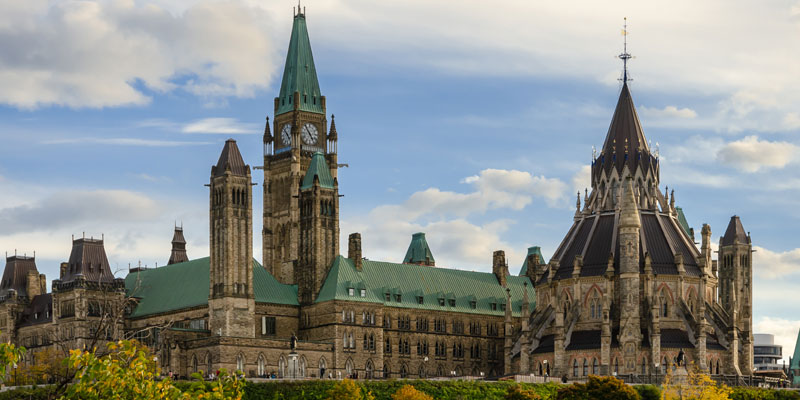Blog series part 2—Incomes, overall income economy grew more slowly under Liberals than before 2008-09 recession

In the first part of this blog series, we outlined the Trudeau government’s tax and spending policies. In this second part of the series, we look at the results of these policies and their effects on Canadians and the overall economy.
The Trudeau government’s bacchanalia of higher taxes, more borrowing and spending was all meant to improve the economy and increase incomes for Canadian families. The obvious first measure of performance is the growth in the overall economy (i.e. GDP). Throughout this discussion we examine the available data from 2014 to 2018 (or 2019 depending on data availability) to the comparable period before the last recession (2009).
GDP per person, that is, the total value of all goods and services produced in Canada in a particular year, adjusted for population and inflation (in 2018 dollars), grew 2.3 per cent between 2014 and 2018—less than half the growth rate (4.9 per cent) recorded between 2004 and 2008.
Similar results occur when income for individuals and families are assessed. The average income for individual Canadians (after tax) grew by 3.7 per cent between 2014 and 2018. Again, that’s less than half the rate (8.0 per cent) of the comparable income growth recorded from 2004 to 2008.
The results are no better when we examine families. Average after-tax income for families increased by 4.4 per cent between 2014 and 2018—again, less than half the increase (9.7 per cent) from 2004 to 2008.
The Liberals focused on a particular family type— couples with children—where the results are similar: 3.6 per cent growth in average after-tax income between 2014 and 2018 compared to 7.1 per cent growth between 2004 and 2008.
These results hold for almost every type of income or family unit across these time periods. Simply put, income and the economy has grown more slowly during the first Liberal mandate than it did during the comparable period prior to the 2008-09 recession.
Part of the explanation for this decline in overall economic and income growth is the astonishing drop in business investment between 2014 and 2019, the latest year of available data. Excluding residential investment, business investment dropped 17.3 per cent. This includes investment in machinery and equipment, factories and intellectual property, all of which are the foundation for economic prosperity.
During the comparable period prior to the 2009 recession (2003 to 2008), business investment (minus residential investments) grew by 42.1 per cent. It’s hard to imagine a starker contrast in investment; and lest we think it’s explained by a drop in the energy sector, a recent analysis concluded that two-thirds of Canada’s industries experienced a decline in business investment.
The Liberals lauded historically low unemployment rates during their first mandate. However, as a number of researchers have noted, the shrinking labour force from our aging population has made the unemployment rate less reliable then in the past in gauging the health of the overall labour market. Growth in private-sector employment, for instance, was almost identical (6.7 per cent vs. 6.6 per cent) for 2014-2019 compared to 2003-2008. Moreover, the declining labour force numbers—the share of the population active in the labour market—should have concerned governments. For instance, the average labour force participation rate between 2014 and 2019 was 65.7 per cent compared to 67.4 per cent between 2003 and 2008.
Finally, there are continuing signs that entrepreneurship is declining. Small business startup rates, a critical and illustrative measure of entrepreneurship, fell from 16.3 per 100 existing firms in 2007 to 13.7 in 2017, a decline of 16.0 per cent.
It’s important to recognize the reality of the policy reforms introduced in 2015 (and continued to this day), particularly as we contemplate policies to aid in the economic recovery. Simply put, the Liberal mix of higher taxes, more government spending and indebtedness did not result in a robust economy (pre-recession) as promised. Rather, GDP and income growth have slowed, business investment has collapsed, and there are continued worrying signs for entrepreneurship. If government policies are to foster economic recovery and a return to prosperity for Canadians, a new direction is required.
Authors:
Subscribe to the Fraser Institute
Get the latest news from the Fraser Institute on the latest research studies, news and events.

